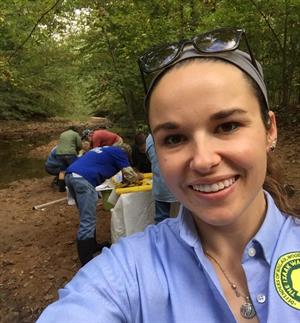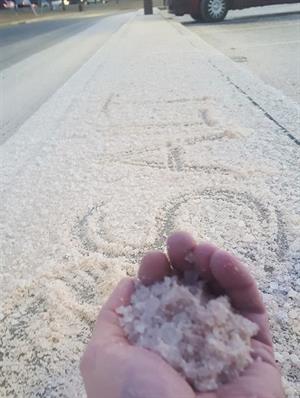Samantha Briggs, IWLA Save Our Streams Coordinator
 We have experienced a lot of erratic weather in the past month – snow and ice one day, sunny and 75 degrees the next. The latest burst of warm weather had me excited to be outside (sans jacket) and looking forward to getting out in hip waders for the spring monitoring season. The last thing on my mind during such unseasonably warm days was road salt – that is, until the League launched our Winter Salt Watch. It turns out that the threat to water quality from excess road salt is highest after the weather warms up.
We have experienced a lot of erratic weather in the past month – snow and ice one day, sunny and 75 degrees the next. The latest burst of warm weather had me excited to be outside (sans jacket) and looking forward to getting out in hip waders for the spring monitoring season. The last thing on my mind during such unseasonably warm days was road salt – that is, until the League launched our Winter Salt Watch. It turns out that the threat to water quality from excess road salt is highest after the weather warms up.
As I took a walk around the lake at the League’s national headquarters, the ground squished beneath my feet and I spotted water pooling in low points on the property. Once locked in place as ice, this water was now free to flow into nearby Muddy Branch creek. Melted snow and ice picks up pollutants as it drains into America’s streams and rivers – including the tons of salt (literally!) deposited on our roads all winter long. While salt can ensure safety on winter roads and sidewalks, too much salt (chloride) applied at one time can decimate stream health.

That was the case in Muddy Branch, which we have been monitoring for chloride over the past several months. On the first warm day in February, the chloride reading was 326 parts per million (ppm). To put that into perspective, the U.S. Environmental Protection Agency classifies chloride concentrations of 230 ppm or greater as dangerous to aquatic life. And the chloride level in this creek is typically just 0-30 ppm.
This spike in chloride levels was almost certainly due to melting ice that washed road salt into the creek. Rain events can produce an even more dramatic spike in chloride levels due to the rapid rush of water into small streams and rivers. Rain also flushes salt out of the ground near roadways and sidewalks, where road salt is initially absorbed after a weather event – and can continue to leach out months after the salt was applied to the road.
All of which makes it critical to monitor chloride levels long after the spring thaw. For those of you who received #SaltWatch kits, keep monitoring! And if you have not signed up for a FREE kit yet, it’s not too late.
Request your kit and help us document the effect of road salts on streams nationwide